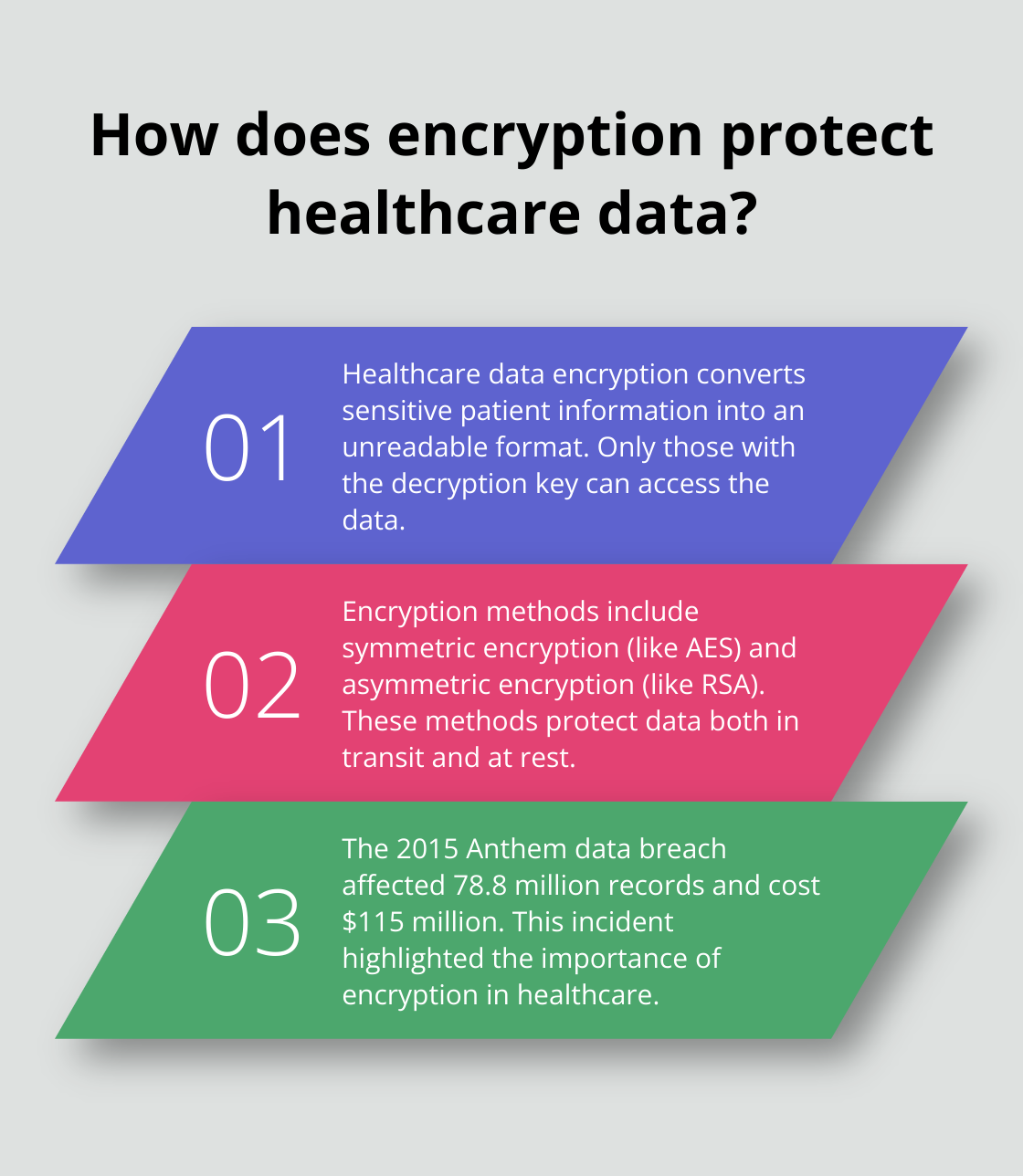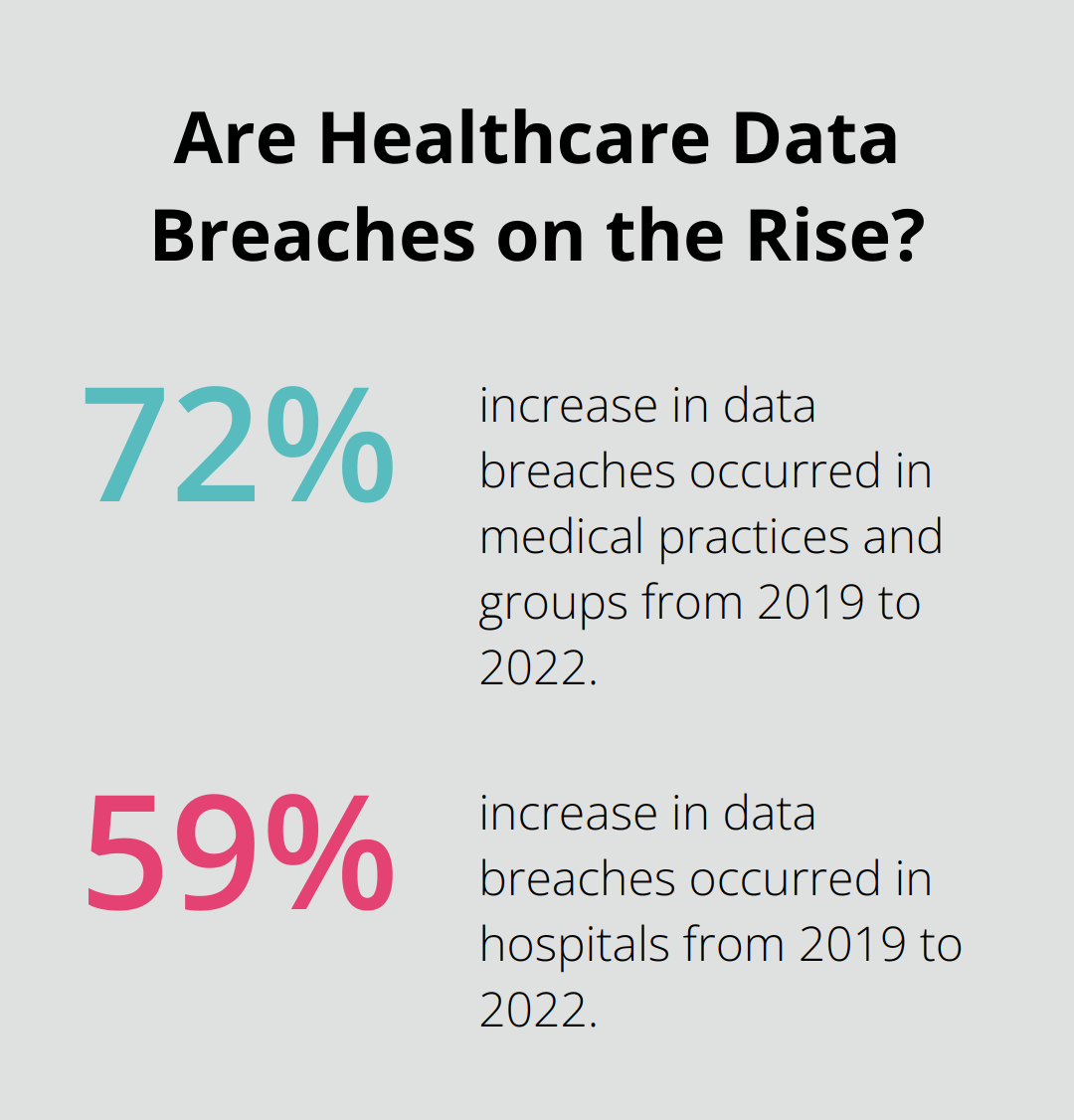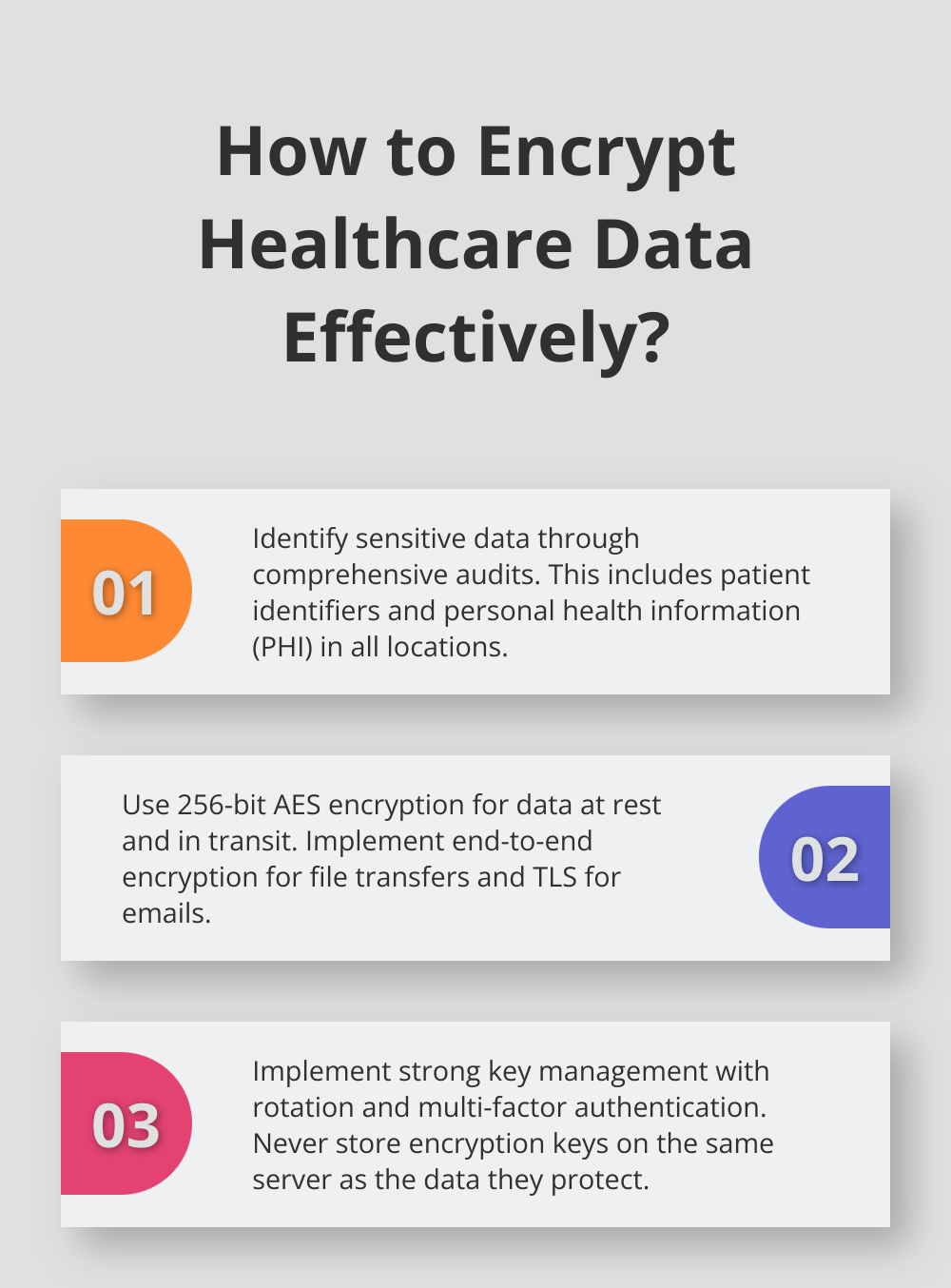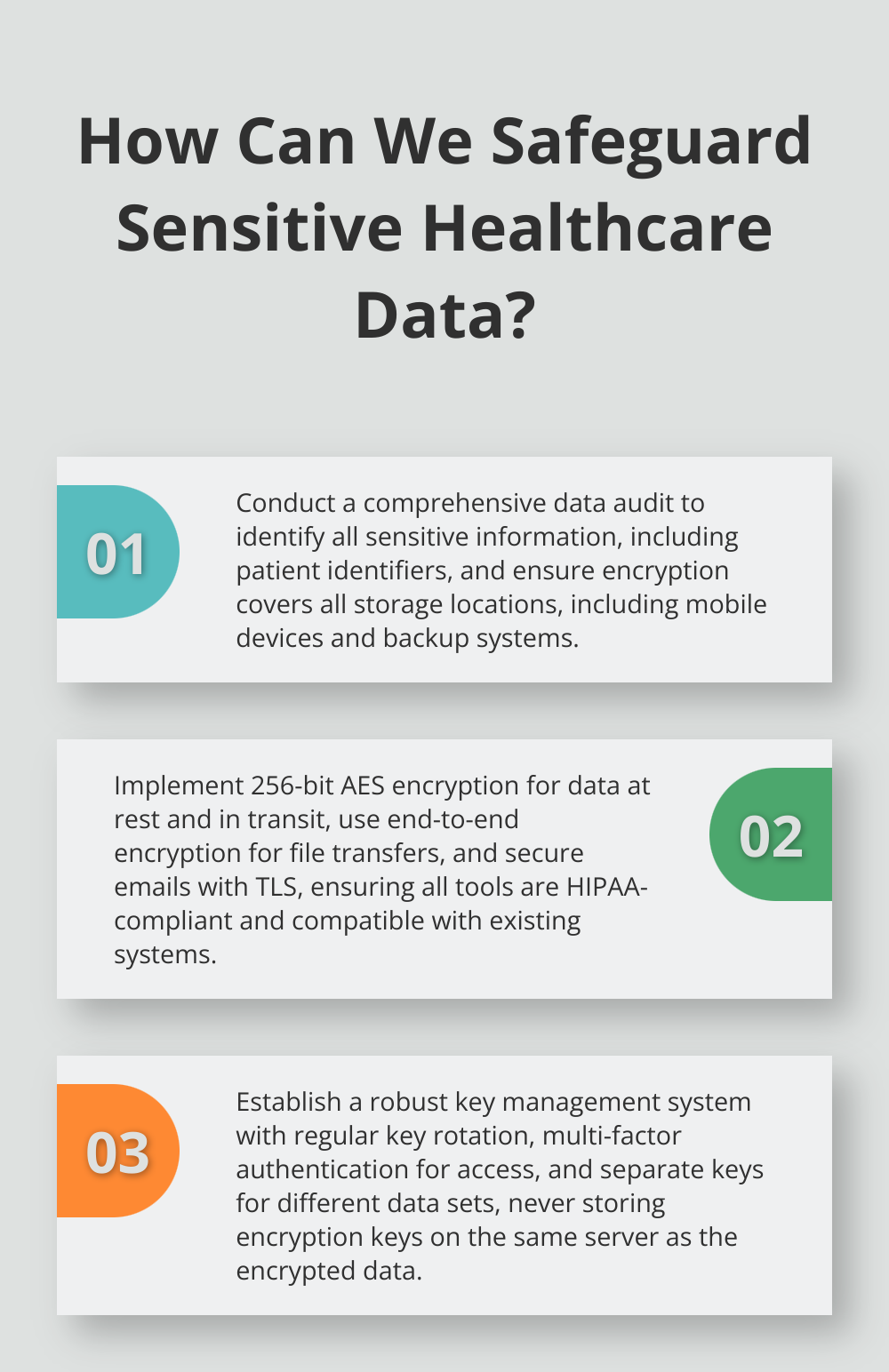Alright, let’s get into it. Data encryption—it’s the unsung hero of patient information security in healthcare. As cyber villains multiply like rabbits, keeping that sensitive medical stuff locked down … it’s not just smart. It’s essential.
Enter ScriberJoy. We’ve had front-row seats to the show where rock-solid encryption saved healthcare providers from breaches that could’ve been catastrophic—not to mention those wallet-draining HIPAA violations.
So, what’s the deal with this guide? It’ll break down the nuts and bolts of healthcare data encryption and give you the playbook—yes, actionable steps—to protect your patients’ most confidential info. Buckle up!
What Is Data Encryption in Healthcare?
The Fundamentals of Healthcare Data Encryption
So, here’s the deal – data encryption in healthcare is like putting sensitive patient information into a digital lockbox, right? This unreadable format prevents prying eyes from having a peek unless they’ve got the golden ticket (or, in this case, the decryption key). This whole shebang is all about one thing: keeping electronic health records (EHRs) safe from wannabe hackers and unauthorized peeps.

Enter stage left – encryption methods. Healthcare folks use a toolbox of tricks here. Symmetric encryption, such as the famous Advanced Encryption Standard (AES), is like using one key to both lock and unlock. Fast and furious for large data volumes. Then there’s asymmetric encryption (cue RSA) which uses two keys, a public and a private one – perfect for keeping the chatter between parties hush-hush.
Encryption in Transit vs. At Rest
We’ve got two main gigs going on – data commuting (in transit) and chilling (at rest).
When data’s on the move, like during an email sprint or file relay, encryption in transit steps in as the bouncer. Transport Layer Security (TLS) is often the go-to muscle here.
Meanwhile, encryption at rest is like having a vault for all the data lounging on servers, databases, or devices. Even if someone nabs the hardware, they’re locked out of the goods without the secret key.
Real-World Impact of Encryption
Let’s not beat around the bush – encryption is kind of a big deal. Remember Anthem’s 2015 fiasco? They got hit with a data breach that rocked 78.8 million records – partly because some of that data was just hanging out unencrypted. Ouch. That little oopsie cost ’em $115 million and reminded everyone why encryption is non-negotiable in healthcare.
And then there’s HIPAA – up there with the wizards of data protection. The U.S. Department of Health and Human Services nudges folks toward encryption as a best practice. Sure, it’s not a rule written in stone, but if you skip it, you’d better have a good story and a plan B.
The Role of Encryption in HIPAA Compliance
So, HIPAA’s like the rule book for guarding patient info. Encryption is your MVP here. It offers a safe harbor provision – fancy talk for saying if your encrypted data gets snagged, you might not have to involve the heavyweights at the Office for Civil Rights.
Healthcare orgs need to up their encryption game to dodge data disasters and keep patient trust intact. As cyber threats keep morphing, staying sharp with the latest encryption tech and strategies is the name of the game to protect our precious healthcare data.
Next up, let’s dive into all the juicy benefits data encryption serves up for healthcare providers – dodging penalties and building rock-solid trust with patients and stakeholders. Stay tuned!
Why Encrypt Healthcare Data
Dodging HIPAA Whammies
So, here’s the thing – HIPAA violations can cost a pretty penny. Anthem’s $16 million settlement back in 2018 paints a rather grim (and expensive) picture. This ginormous fine was the fallout from a data breach that hit 79 million folks. The magic wand that could’ve zapped this problem? Encryption. For healthcare providers, encrypting sensitive info is like putting guards on every corner – it can prevent those accidental “oops” moments. If a breach does happen, encrypted data just sits there – all mumbo jumbo – saving potentially millions in penalties.
Slamming the Door on Cyber Baddies
Cyberattacks in healthcare – up and up. The U.S. Department of Health and Human Services noted a 55.1% jump in such breaches during 2020. Encryption comes in as the great wall of “nope.” Hackers bump into encrypted data and – bam – dead end. If they can’t read it, they can’t use it or sell it. This extends to more than just patient files, think financial data or juicy internal chats (all goldmines for cyber pirates).
Cementing Rock-Solid Patient Trust
Trust – it’s the bedrock of healthcare, right? Data breaches ballooned 72% in medical practices and groups from 2019 to 2022, and 59% in hospitals. Encryption screams to patients: “We’ve got your back!” It’s not just about dodging bad press, but it’s the glue for long-term patient relationships. Trusting patients spill the beans about their health issues, leading to better care outcomes.
Locking Down the Really Sensitive Stuff
Now, healthcare data’s got some of the most personal deets ever. From what ails you to what’s in your wallet – it screams for high-octane protection. Encryption flips this sensitive data into a code that’s gibberish to outsiders. This level of security ensures that providers keep a tight lid on patient details, come any cyber storm.
Hitting those Regulatory Marks
While HIPAA drops hints rather than mandates on encryption, it throws two thumbs up for it as best practice. Healthcare outfits that weave in top-tier encryption strategies are sitting pretty when it comes to regulatory compliance. Being ahead of the curve not only wards off penalties but also flashes a commitment to security that regulators nod at approvingly.

So, the future’s not even a question: encryption is a key player in shielding healthcare data. But the burning question is – how do you seamlessly weave encryption into the daily hustle of healthcare? Roll up those sleeves and let’s dive into the nitty-gritty of implementing knockout encryption strategies in healthcare setups.
How to Implement Effective Data Encryption in Healthcare
Identify Sensitive Data
Kicking off with data encryption in healthcare, it’s all about a full-court press. Start by doing a serious data audit. You need to know exactly where all that sensitive info is chilling and how it moves around your space. We’re talking patient identifiers here-full names, dates of birth, contact info, even next of kin details. And don’t you dare forget those sneaky spots like mobile devices and backup systems. If it’s got personal health information (PHI)? Boom, it needs encryption.
Select Robust Encryption Tools
Next up, you’ve gotta be picky about your encryption tools. Go for software that can handle both data when it’s at rest and on the go. We’re talking 256-bit AES encryption-this stuff will keep you in the good graces of HIPAA land. For file transfers, end-to-end encryption is your best bud. Lock down those emails with TLS. Whatever tools you choose, make sure they vibe with your existing systems and are HIPAA-compliant. (Some, like ScribeJoy, seamlessly weave HIPAA compliance into their DNA.)
Implement Strong Key Management
Now, listen up-key management is where it gets real. You need a solid system for rotating and securing those keys. Never-and I mean never-stash your encryption keys on the same server as the data (that’s basically letting burglars borrow your house key under the doormat). Multi-factor authentication for key access is non-negotiable. Different keys for different data sets? Yes, please-consider it an extra layer of security.
Train Your Staff Thoroughly
Your team is your first line of defense-train them like it. Regular and thorough training on encryption protocols is a must. Make sure they get not only the “how” but the “why” behind what you’re doing. Provide straightforward guides for encrypting different data types. Play out security breach simulations to test how they’d handle the real thing. Create a culture where asking security questions isn’t just okay, it’s celebrated.
Maintain Ongoing Vigilance
Encryption isn’t a set-it-and-forget-it gig. It demands your ongoing focus and tweaks. Keep up with the latest in encryption standards and any new threats making the rounds. Regular audits of your encryption practices will help you spot and tighten potential vulnerabilities before they become big problems. (This vigilance keeps you one step ahead of those lurking security breaches.)

Final Thoughts
So, we’re talking data encryption in healthcare-a fancy way of making sure your sensitive info looks like Greek to anyone without the right decoder ring. This stuff? It’s your shield against breaches, keeping you on the right side of HIPAA and those wallet-crushing fines. Plus, it’s a big trust fall with your patients. And guess what? The tech arena here is not standing still; it’s sprinting-think advanced encryption and blockchains for rock-solid health records.

Healthcare pros, listen up: You’ve got to be ahead of the bad guys, ’cause these cyber attacks are getting craftier by the minute. Solid encryption strategies? They’re your front line-keeping that patient trust and your services shining bright. Over at ScriberJoy, we get it. Seriously, our medical transcription software was practically born with HIPAA in its DNA.
Time to roll up those sleeves: Protect your patients’ data, uphold your good name, and set your sights on a future where healthcare isn’t a data disaster waiting to happen. It’s all about locking down your encryption game, keeping on top of those sneaky threats, and sticking to solutions that scream data security. Your patients’ wellbeing-and your clinic’s peace of mind-are hanging in the balance.

Leave a Reply
You must be logged in to post a comment.